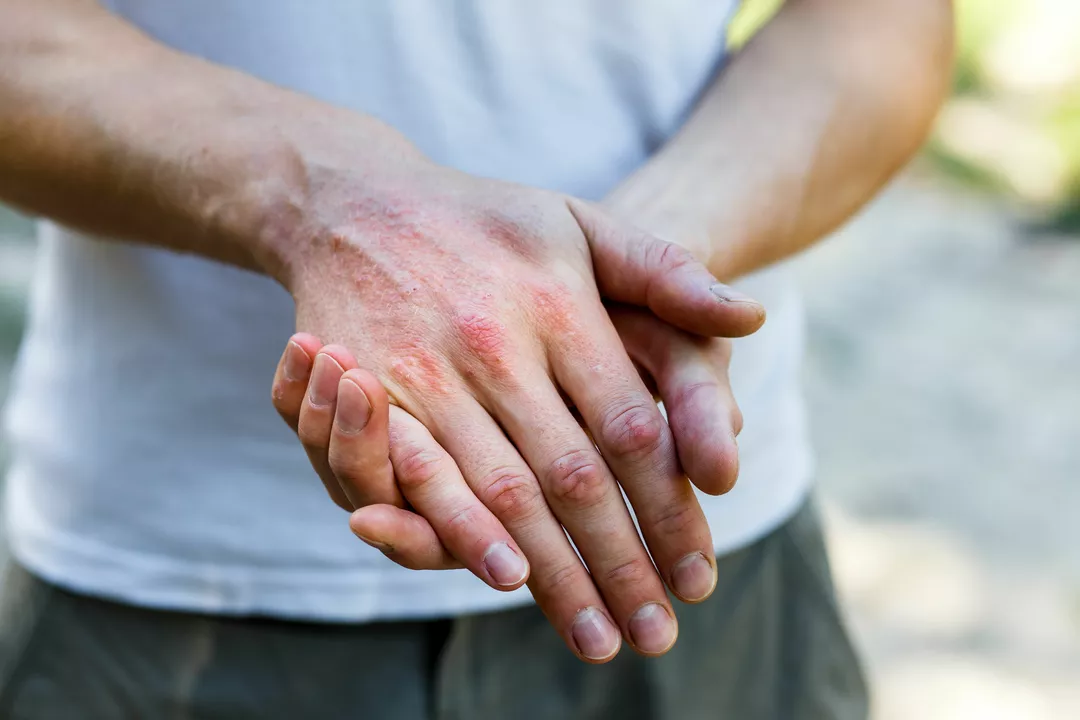Dermatitis Herpetiformis: Symptoms, Diagnosis & Treatment
Dermatitis herpetiformis is an itchy, blistering skin condition linked to gluten sensitivity. It looks like clusters of red bumps and blisters, often on elbows, knees, buttocks and scalp. The itch can be intense — people wake up with angry, raised patches that get worse when scratched.
Why should you care? Because dermatitis herpetiformis is the skin sign of celiac disease. Many people with this rash have gut inflammation even if they don’t notice stomach problems. Treating the skin without checking the gut can miss a bigger issue that affects long-term health.
What causes dermatitis herpetiformis?
The root problem is an immune reaction to gluten. When someone with this condition eats gluten, their immune system makes antibodies that deposit in the skin and cause tiny blisters and burning itch. Genetics plays a role — certain genes raise the odds — but diet is the trigger you can control.
Not every gluten-sensitive person gets this rash, and symptoms vary. Some people barely have blisters but suffer unstoppable itching. Others get clear blisters that can leak fluid. Because it looks like other skin problems, doctors often need specific tests to be sure.
How is it diagnosed and treated?
A dermatologist usually confirms dermatitis herpetiformis with a skin biopsy and direct immunofluorescence testing. This test shows granular IgA deposits in the upper layer of skin — a clear sign. Blood tests for celiac disease and an intestinal biopsy may follow to check for gut damage.
Treatment has two parts: fast symptom control and long-term prevention. Dapsone is the most common medicine for quick relief; it can stop the itch within days. But dapsone can cause side effects, so blood tests are needed before and during treatment. Sulfapyridine is an alternative for those who can’t take dapsone.
The long-term strategy is a strict gluten-free diet. Over months to years a gluten-free diet can clear the skin and reduce or stop the need for dapsone. Follow-up with a dietitian helps you avoid hidden gluten and get enough nutrients. Even if your gut feels fine, a gluten-free diet matters to prevent complications linked to celiac disease.
Practical skin care helps too: cool compresses, gentle cleansers, and fragrance-free moisturizers reduce irritation. Avoid scratching to lower the risk of infection. If blisters leak or you get signs of infection — increasing redness, warmth, pus, or fever — see a doctor fast.
Watch for hidden gluten in sauces, soy sauce, medications and supplements — read labels, ask pharmacists, check certified gluten-free logos. Kids can get dermatitis herpetiformis too; work with your pediatrician and dietitian to keep a balanced gluten-free menu. Joining a celiac support group helps with meal ideas and support. If your rash returns despite strict diet, talk to your dermatologist about testing for accidental gluten exposure.
Living with dermatitis herpetiformis means managing diet and staying connected with your healthcare team. Regular blood tests and checkups make sure medication is safe and the gut is healing. With the right care, most people control symptoms and protect their long-term health.
Living with Dermatitis Herpetiformis: Tips for Managing Your Condition
Living with dermatitis herpetiformis can be challenging, but I've found some effective tips to manage my condition. First, adhering to a strict gluten-free diet has significantly reduced my symptoms. Second, regular visits to my dermatologist have helped me stay on track with my treatment plan. Additionally, using mild, fragrance-free skincare products and keeping my skin moisturized has improved my overall skin health. Lastly, managing stress and getting enough rest have also played a vital role in controlling my dermatitis herpetiformis symptoms.

